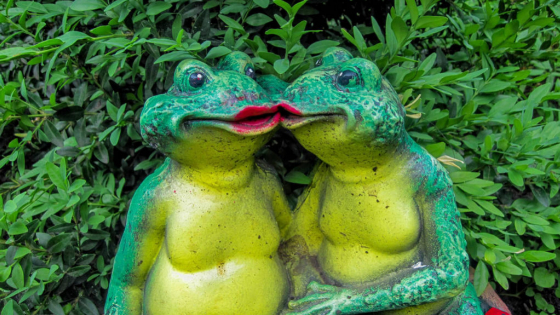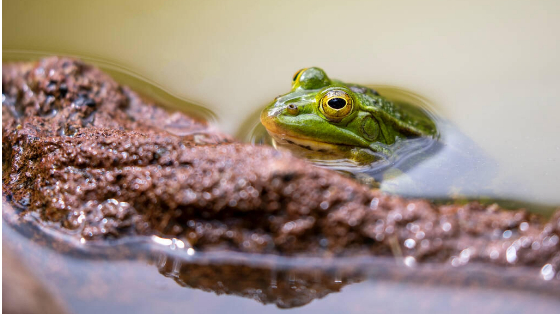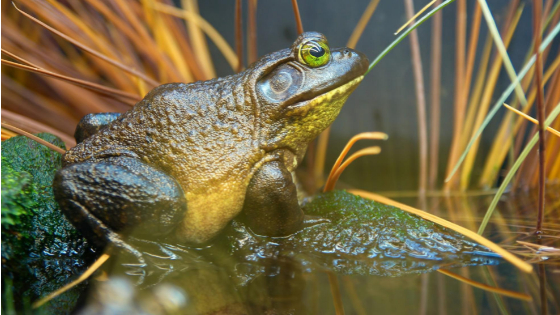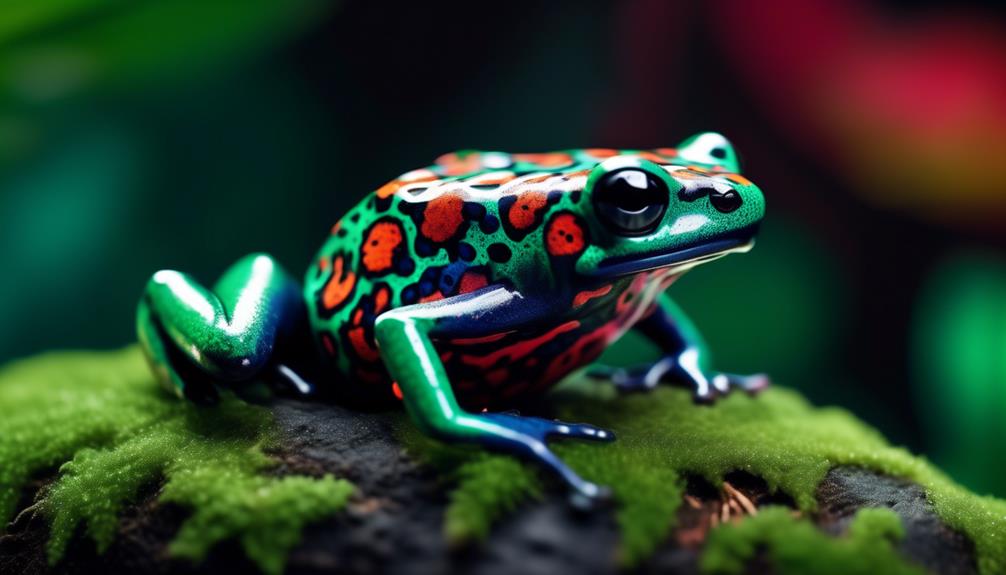
The mimic poison frog, Ranitomeya imitator, is a captivating species that has captivated the attention of herpetologists worldwide. With its striking coloration and mild toxicity, this small frog has become a subject of great fascination. Its various color morphs, ranging from striped to spotted patterns, have intrigued scientists, as they play a crucial role in reproductive isolation and speciation.
Moreover, the mimic poison frog’s unique characteristics, such as its acquisition of toxins from consuming toxic insects and its demonstration of monogamy and biparental care, have piqued the interest of researchers. However, this enigmatic species is not without its challenges, facing threats such as habitat loss, degradation, and illegal trade.
As we delve deeper into the world of the mimic poison frog, we uncover not only its intriguing biology but also the urgent need for conservation efforts to ensure its survival.
Key Takeaways
- R. imitator is a species of poison dart frog that exhibits different color morphs, including striped, spotted, and banded.
- Transition zones between populations of R. imitator allow for interactions and likely drive reproductive isolation.
- R. imitator has mild toxicity compared to other poison dart frogs and gains poison from consuming toxic insects or invertebrates.
- R. imitator is listed as a threatened species on the IUCN Red List, and conservation efforts are needed to protect their habitat and population.
Color Morphology and Interactions
The color morphology and interactions of mimic poison frogs, specifically the different color morphs and their potential role in reproductive isolation, are key components in understanding the speciation process of this species.
Different populations of mimic poison frogs, known as R. imitator, exhibit various color morphs, including striped, spotted, and banded morphs. The striped morph is the most widely spread, while the spotted morph displays blue-green coloration and the banded morph is found in drier climates.
Transition zones between populations allow for interaction and likely drive reproductive isolation. Interestingly, male calls vary little among different color morphs, indicating that color pattern is a principal component driving speciation.
Toxicity and Reproduction
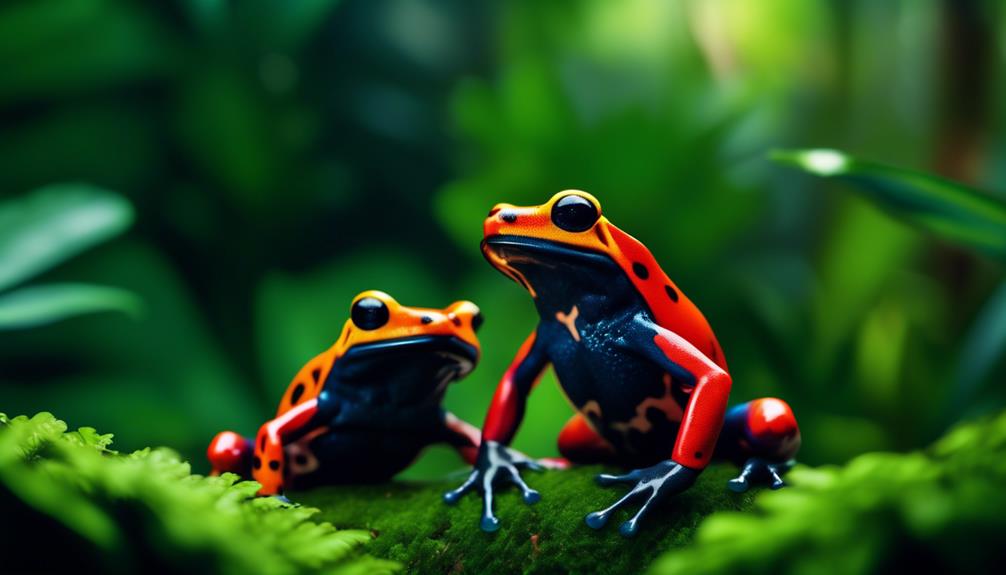
The unique color morphs of mimic poison frogs, such as the striped, spotted, and banded morphs, play a pivotal role in understanding their speciation process, which is further influenced by their mild toxicity and reproductive strategies. R. imitator has mild toxicity compared to other poison dart frogs, producing the potent pumiliotoxin B. Its small size limits the amount of poison it can secrete, and it gains poison from consuming toxic insects or invertebrates. Interestingly, R. imitator is the first amphibian to show evidence of monogamy and biparental care. Parental care, including guarding and transporting tadpoles, is vital for offspring growth and success. Male calls and oviposition site selection are involved in courtship. The following table highlights the toxicity and reproductive strategies of mimic poison frogs:
| Toxicity | Reproduction |
|---|---|
| Mild | Monogamy |
| Pumiliotoxin B | Biparental care |
| Small size limits poison secretion | Guarding and transporting tadpoles |
| Gains poison from consuming toxic insects or invertebrates | Male calls and oviposition site selection |
The combination of mild toxicity and unique reproductive strategies contributes to the enigmatic nature of the mimic poison frog.
Ownership and Threatened Status
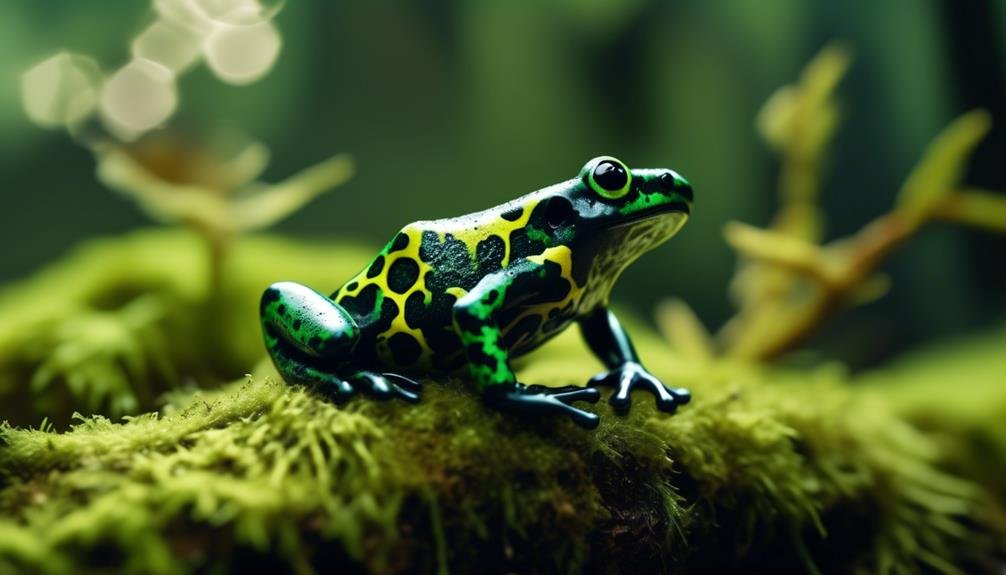
Ownership and Threatened Status:
The mimic poison frog, Ranitomeya imitator, faces several conservation challenges and illegal trade issues. Despite having relatively large and stable wild populations, it is often illegally collected and exported. Additionally, it is legally imported and found in the pet trade, with multiple captive-bred varieties available.
However, the species is listed as threatened on the IUCN Red List, indicating a declining population. Habitat loss and degradation are significant threats to mimic poison frogs, highlighting the urgent need for conservation efforts to protect their habitat and population.
The conservation status of these frogs is a cause for concern, and addressing the illegal trade and implementing effective conservation measures are crucial for their survival in the wild.
Research on Mimic Poison Frogs
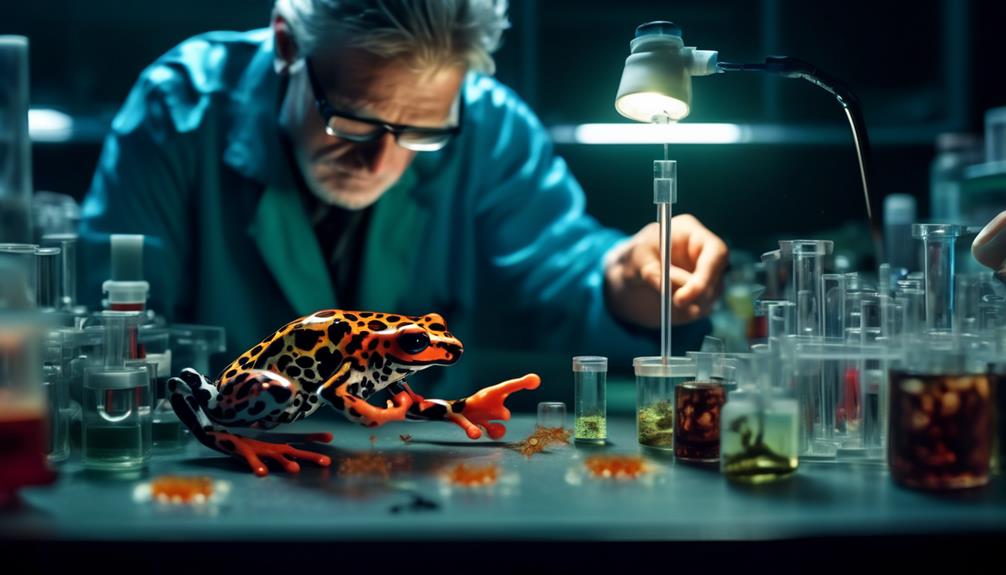
Research on mimic poison frogs has provided valuable insights into their biology, behavior, and ecological importance. Several studies have focused on various aspects of these fascinating creatures, ranging from their toxicology to their reproductive behaviors. For instance, Dumbacher et al. (2004) discovered that Melyrid beetles may be a source of batrachotoxin alkaloids found in poison-dart frogs and toxic passerine birds. Brown et al. (2010) identified a key ecological trait that drove the evolution of biparental care and monogamy in the mimic poison frog. Tumulty et al. (2014) provided experimental evidence supporting the biparental care hypothesis for the evolution of monogamy in an amphibian. Summers et al. (2008) studied phytotelm size in relation to parental care and mating strategies in two species of Peruvian poison frogs. These studies, among others, have significantly contributed to our understanding of mimic poison frogs and their ecological significance.
| Study | Findings |
|---|---|
| Dumbacher et al. (2004) | Melyrid beetles as a source of batrachotoxin alkaloids |
| Brown et al. (2010) | Key ecological trait driving biparental care and monogamy |
| Tumulty et al. (2014) | Experimental evidence supporting biparental care hypothesis |
| Summers et al. (2008) | Phytotelm size in relation to parental care and mating strategies |
Offspring Behavior, Care, and Breeding
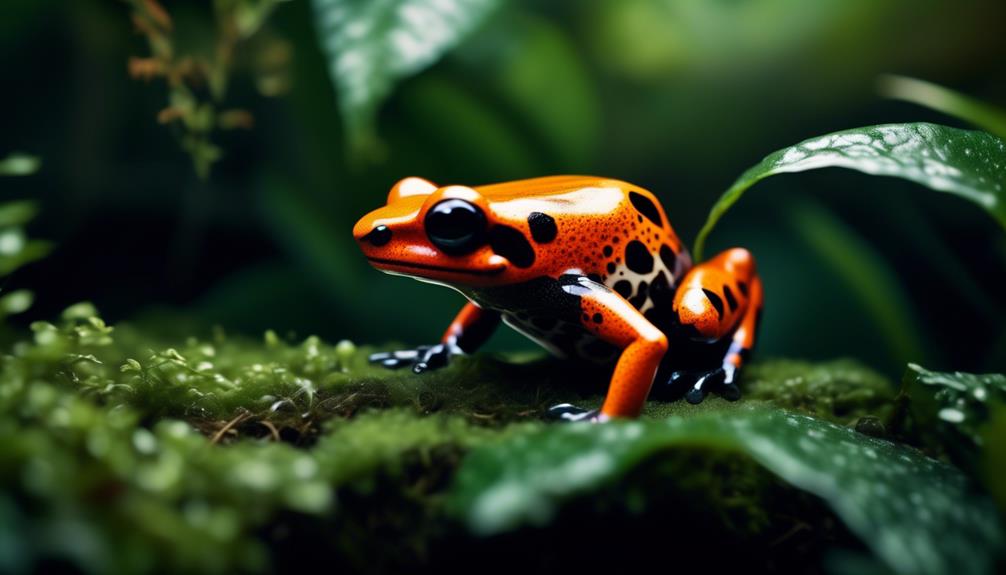
Offspring behavior, care, and breeding in mimic poison frogs are crucial aspects of their biology and conservation.
Mimic poison frogs, such as the Ranitomeya imitator, exhibit unique breeding behaviors and requirements. They are the first amphibians to show evidence of monogamy and biparental care.
Parental care is vital for the growth and success of their offspring. Male frogs are involved in courtship through calls and oviposition site selection. They also engage in guarding and transporting tadpoles.
Research has shown that offspring behavior in mimic poison frogs is influenced by hormonal facilitators.
To ensure the health and reproduction of these frogs, specific care conditions, such as proper diet and habitat setup, are necessary.
Breeding mimic poison frogs in captivity can contribute to their conservation efforts.
Ecological Importance
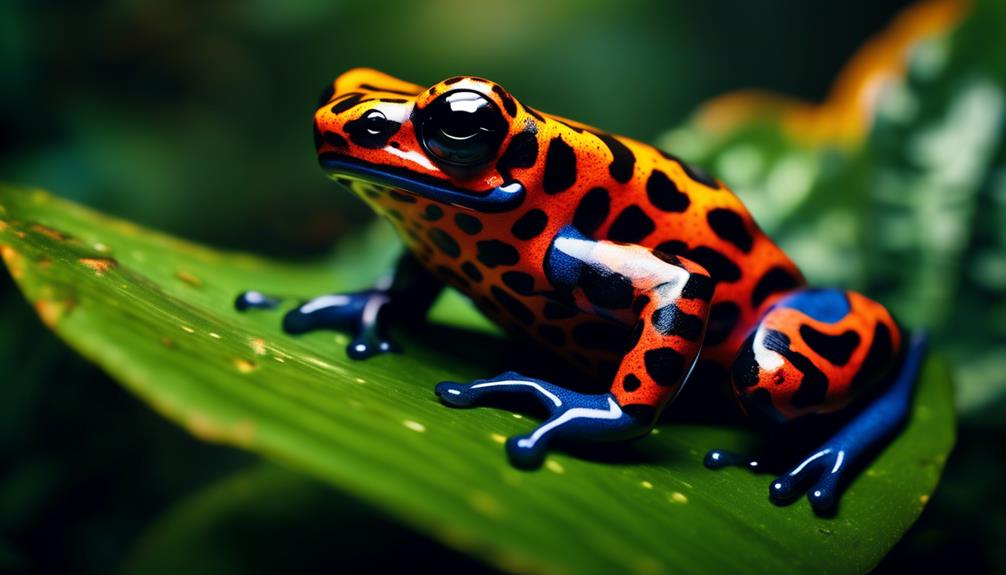
Mimic poison frogs play a vital ecological role as both prey and predator, contributing to the balance of insect populations and indicating the health of their habitat. These small frogs are known for their unique adaptations and mild toxicity, which allows them to control insect populations by preying on various invertebrates. As predators, mimic poison frogs help in regulating the numbers of insects, such as ants, beetles, and spiders, which can have significant impacts on the overall ecosystem. Moreover, the presence of mimic poison frogs in an area indicates a healthy habitat with abundant food resources and suitable conditions for their survival. To further understand the ecological importance of these frogs, the following table highlights their role as both prey and predator:
| Role | Prey | Predator |
|---|---|---|
| Prey | Various invertebrates, including ants and beetles | Predatory birds, snakes, and other larger amphibians |
| Predator | None | Insects, spiders, and other small invertebrates |
Habitat and Distribution
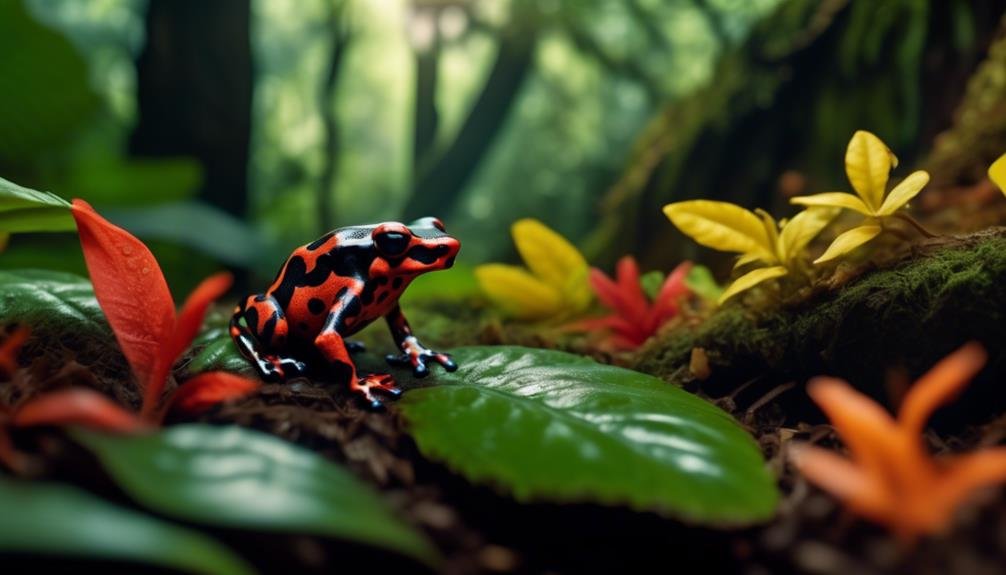
The habitat and distribution of mimic poison frogs are influenced by various ecological factors and geographical factors.
These frogs are primarily found in the tropical rainforests of Central and South America, including countries such as Peru, Ecuador, and Colombia. They inhabit the forest floor and are often found near streams or bodies of water.
Mimic poison frogs prefer areas with dense vegetation and leaf litter, which provides them with ample hiding places and breeding sites. They are also sensitive to changes in temperature and humidity, requiring specific microhabitats for their survival.
The distribution of mimic poison frogs is further influenced by factors such as competition with other frog species and the availability of suitable prey.
Understanding the habitat and distribution of these frogs is crucial for their conservation and protection.
Predators and Prey
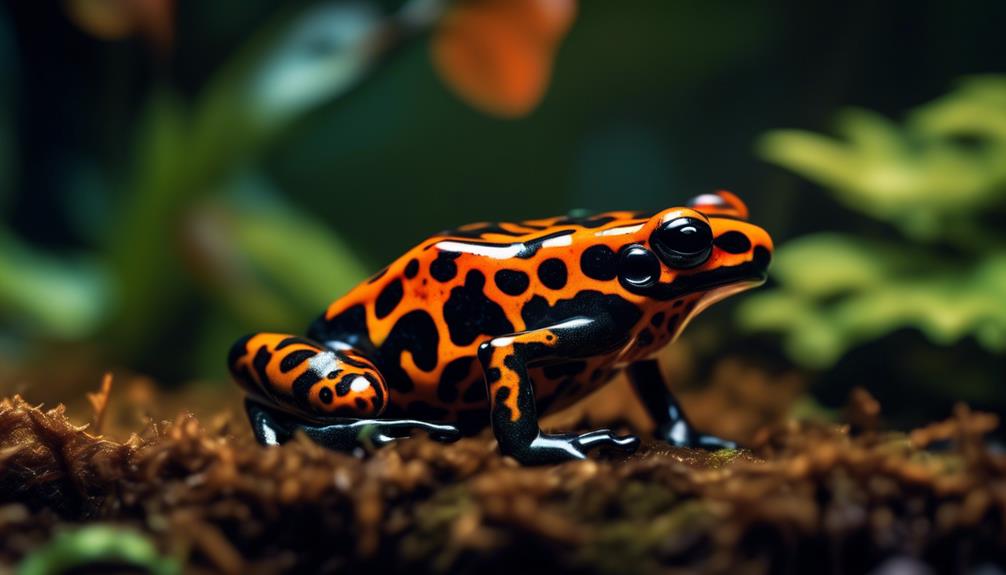
Predators and prey play a significant role in the ecological dynamics of mimic poison frogs. These small, toxic frogs have evolved unique adaptations to survive in their environment, including their bright coloration that serves as a warning signal to potential predators. The primary predators of mimic poison frogs are snakes, birds, and small mammals. However, due to their toxic skin secretions, these predators often avoid consuming them. The mimic poison frogs, on the other hand, feed on a variety of small invertebrates such as ants, beetles, and mites. To illustrate the predator-prey relationship, the table below provides a glimpse into the main predators and prey of mimic poison frogs.
| Predators | Prey |
|---|---|
| Snakes | Ants |
| Birds | Beetles |
| Small mammals | Mites |
Understanding the interactions between predators and prey is essential for comprehending the ecological dynamics and the overall functioning of the ecosystem that mimic poison frogs inhabit.
Conservation Efforts
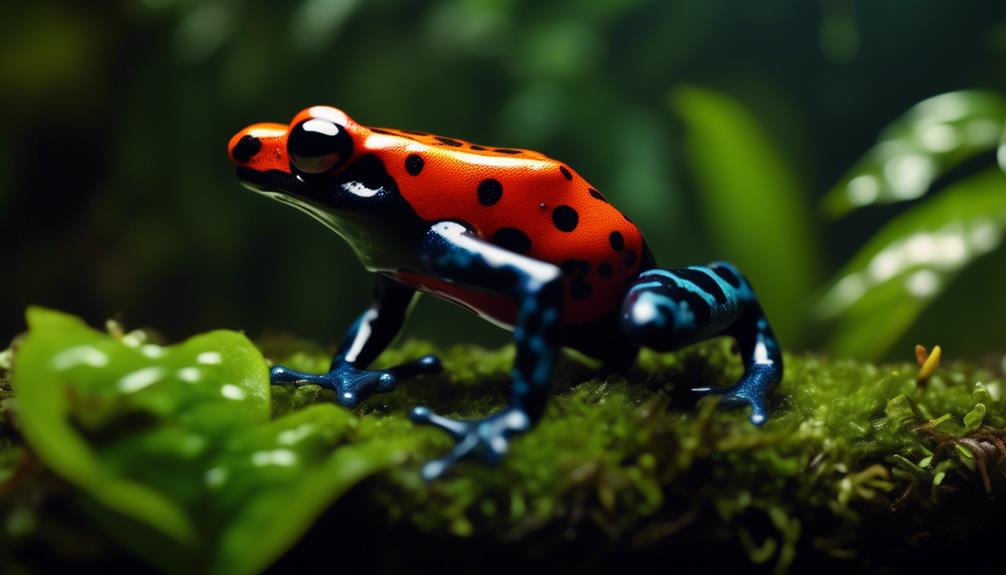
Understanding the importance of maintaining the delicate balance between predator and prey interactions is crucial for informing and implementing effective conservation efforts for the survival of mimic poison frogs.
These unique frogs, with their vibrant colors and toxic skin, face numerous threats that put their populations at risk. Habitat loss and degradation are major concerns, as the destruction of their natural environment directly impacts their ability to find food, reproduce, and thrive.
Additionally, the illegal collection and trade of mimic poison frogs further contribute to their declining numbers. To protect these enigmatic creatures, conservation efforts must focus on preserving their habitats, raising awareness about the importance of their role in the ecosystem, and enforcing regulations against their illegal trade.
Captive Breeding and Care
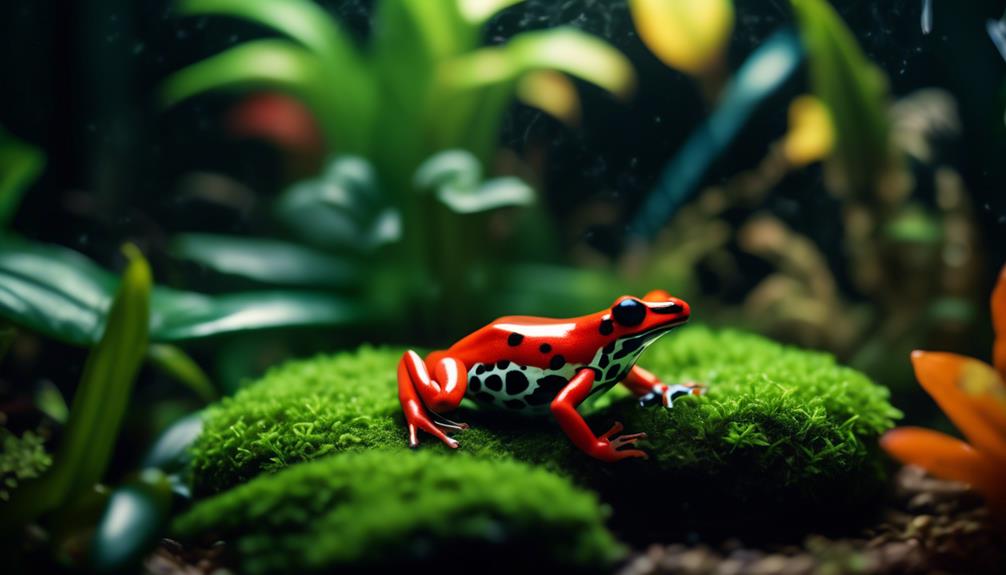
Captive breeding and care play a crucial role in the conservation and preservation of mimic poison frogs. By breeding these frogs in captivity, conservation efforts can help alleviate the pressure on wild populations caused by illegal collection and habitat loss. Proper care is essential to ensure the health and reproduction of the frogs.
Mimic poison frogs have specific breeding behaviors and requirements that need to be met in captivity. This includes providing the frogs with a suitable diet and creating a habitat that mimics their natural environment. Additionally, captive breeding programs can contribute to genetic diversity and help establish insurance populations for this threatened species.
Through careful breeding and care, we can help protect and sustain the population of mimic poison frogs for future generations.
Frequently Asked Questions
What Are the Different Color Morphs of R. Imitator and Where Are They Most Commonly Found?
Different color morphs of R. imitator include striped, spotted, and banded. The striped morph is the most widespread, while the spotted morph is mainly blue-green and the banded morph is found in drier climates.
How Does R. Imitator Acquire Its Toxicity and What Are the Effects of Its Poison on Predators?
- imitator acquires its toxicity by consuming toxic insects or invertebrates, gaining the potent pumiliotoxin B. Its poison has mild toxicity compared to other poison dart frogs and serves as a defense against predators, deterring them from preying on the frog.
What Is the Current Threatened Status of R. Imitator and What Are the Main Threats to Its Population?
Ranitomeya imitator is listed as a threatened species on the IUCN Red List. The main threats to its population include habitat loss and degradation. Conservation efforts are needed to protect its habitat and ensure its population’s survival.
What Are Some Key Research Findings Regarding the Evolution of Monogamy and Biparental Care in Mimic Poison Frogs?
Key research findings regarding the evolution of monogamy and biparental care in mimic poison frogs include the identification of key ecological traits driving these behaviors, experimental evidence supporting the biparental care hypothesis, and the involvement of specific hormones in parental care behaviors.
How Do Mimic Poison Frogs Contribute to the Ecological Balance of Their Habitat and What Unique Adaptations Do They Possess for Survival?
Mimic poison frogs contribute to the ecological balance of their habitat by controlling insect populations and indicating a healthy ecosystem. They possess unique adaptations for survival, such as toxic skin secretions and specific breeding behaviors and requirements.
What Makes the Mimic Poison Frog Rare and Toxic?
The fascinating blue poison dart frog, also known as the mimic poison frog, is rare and toxic due to its unique coloration and powerful venom. Its bright blue skin serves as a warning to predators, making it a beautiful yet dangerous creature in its natural habitat.
Conclusion
In conclusion, the mimic poison frog (Ranitomeya imitator) is a captivating species that offers valuable insights into evolutionary processes and ecological interactions. Its vibrant coloration, mild toxicity, and unique reproductive behaviors make it an enigmatic creature.
Unfortunately, the mimic poison frog faces significant threats due to habitat loss, degradation, and illegal collection. Urgent conservation efforts are needed to protect its habitat and ensure the survival of this threatened species.
Through continued research and study, we can further understand the complex dynamics of this fascinating frog.

